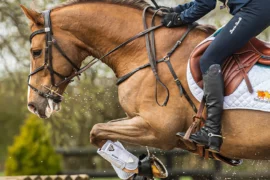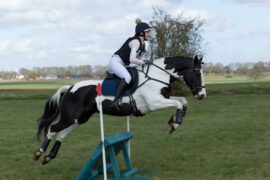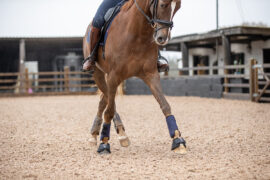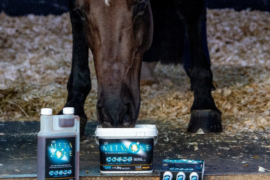Written by: Kate Hore RNutr(Animal) R.Anim.Technol (Cert). Head Nutritionist at NAF
As the days lengthen and we head into Spring, those of us lucky enough to own mares may notice those recognizable signs of her hormonal changes starting to pick up again. Over winter mares typically don’t cycle, they go into a period called ‘anoestrus’. Although we do see some mares showing signs year round, the winter season is quieter, and it is from mid-February through to April that behaviour can really change. This time of year, the ‘transition period’, between anoestrus and full oestrus in the spring and summer is often the trickiest time. The ovaries become more active, but currently may fail to ovulate, meaning the cycles can be quite erratic. Rather than the normal 21 day cycle, your mare experience irregular or prolonged oestrus, and she will need all the help you can give her.
Firstly we need to understand whether the signs seen are definitely linked to her seasons, or whether there could be another reason. Those signs typically associated with in-season mares can be split into two different groups.
Mare specific behaviour
- Increased urination
- Urination, or mating, stance (hindlegs apart)
- Frequent squealing
- Raised tail / vulvar ‘winking’
- Separation anxiety from other horses
These signs are usually only seen in hormonal mares, so give you a very good indication that she is in-season, and her behaviour is hormone related.
Non-mare specific behaviour
- Aggression / change in behaviour
- Kicking and bucking
- Discomfort, i.e. cold-backed when ridden, kicking when tacked up
- Sensitive to touch
- Poor performance / reluctance to work
These signs may be displayed by hormonal mares, but may also be signs of other issues. Therefore, particularly if you are only seeing these signs, without the mare specific signs (above), be sure to check saddle fit, teeth and have a chat with your vet, if necessary, to rule out other causes.
Helping your mare
Whilst synthetic hormone therapy, and even surgery, are available – they are not without issues, and should be considered a last resort. Before then there is much we, as owners, can do to support her naturally.
Firstly, act with sympathy. She is not being ‘naughty’, but displaying perfectly natural behaviour, and often experiencing the discomfort and stress that can come with that. Try to minimize any changes in her management and routine. Particularly try to keep field and stable companions constant, so your mare – and the rest of the herd – are not constantly having to re-find their place. Turnout should be large enough so that splinter groups can form and separate, and so that she can easily spend some time away from the herd if she needs to. Stable neighbours can be even more challenging, as there is less opportunity to move away, so try to ensure she is stabled amongst friends.
When grooming, she may become more sensitive, so do spend some time finding where she enjoys being groomed – and where she doesn’t! And which are her favourite grooming tools.
Targeted herbal support from NAF Five Star Oestress is recommended daily from early spring onwards. The unique formula of Oestress is designed to be twofold, both supporting comfort throughout the cycles, and to help her harness her unique female strengths into focused, positive performance whatever stage of her cycle – ready to take on the geldings, and win!
Real Rider Review – Rebecca Kerry and Sapphire
Owner Rebecca says, ‘Oestress is a fantastic product that has really helped Sapphire, she was a completely different horse after I started feeding it. Sapphire used to feel stressed in the stable and she was also tense to ride. Within just two weeks of feeding Oestress I noticed a real differ. She was a lot calmer and was able to relax when being ridden. She is definitely a lot happier on Oestress – and that makes me happy too!’
Tips on Girl Power
- Minimise changes to field and stable companions
- Ensure adequate turnout
- Use considerate grooming
- Feed Oestress daily





